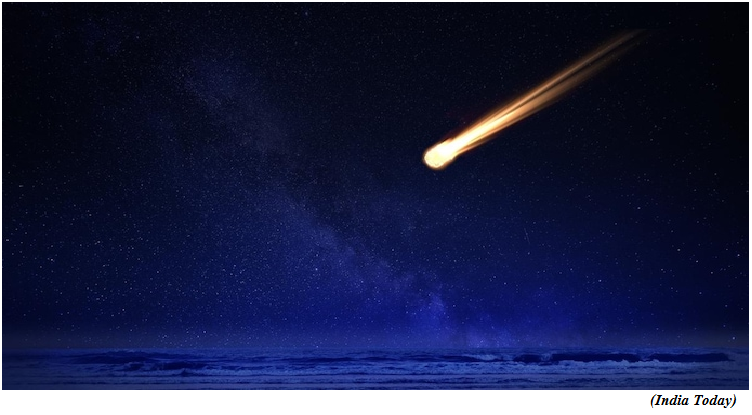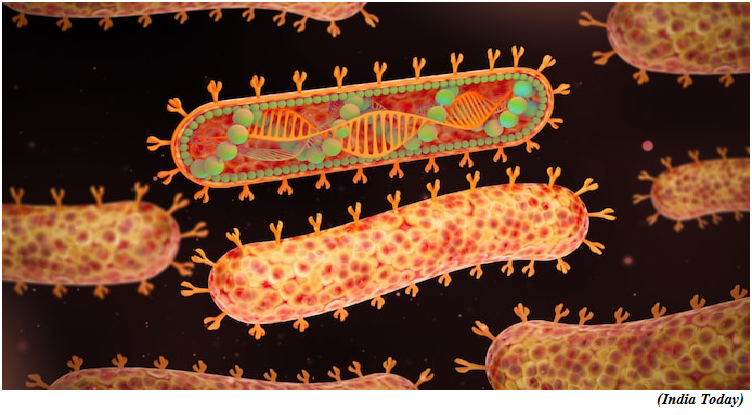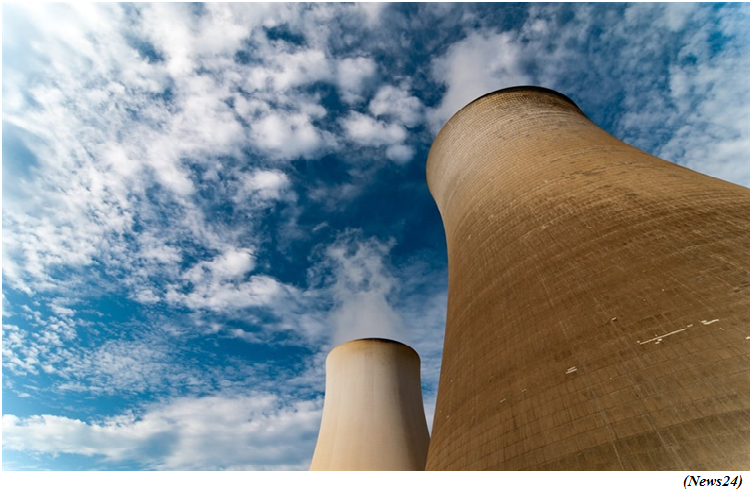Rare aubrite meteor that crashed in Gujarat could shed light on evolution of planets (GS Paper 3, Science and Tech)

Why in news?
- Recently, researchers have confirmed that a meteorite that crashed in two villages of Gujarat is a rare aubrite that originated from an extremely reduced differentiated parent body in our solar system.
Details:
- This rare element had similar and unique characteristics of highly reducing conditions on the surface of planet Mercury and it could prove important for understanding planetary processes in the future.
- The specimens of the meteorite fragments appeared as regolith and were similar in both locations, suggesting that they were likely part of a single meteorite mass before breaking during its passage through the Earth’s atmosphere.
Where was the meteorite found?
- The meteorites fell in the villages Rantila and Ravel of Diyodar taluka in Banaskantha district, Gujarat. Dubbed the Diyodar meteorite, the fragments crashed over India on August 17, 2022, in soft, clayey agricultural land. While villagers did not witness any trail, a thunderous sound was heard, like the passing of a jet plane.
- While one of the fragments hit a neem tree branch and further split into smaller bits, the other big chunk crashed into a porch in Ravel village. Villagers then collected the large pieces immediately after the fall, which were around 200 grams that were handed over to scientists from the Physical Research Laboratory.
- Villagers said that the meteorite fragments yielded a strong, pungent smell similar to the sulfur gas. Analysis of the trajectory also indicated that there could be more fragments in between and away from these villages along the trajectory of the meteorite.
Key Findings:
- Researchers used reflectance spectroscopy to analyse the chunks of the meteor and found that it contained magnesium-rich pyroxene. The team polished a few small chips (0.5–1.5 cm) from the larger fragment of the Diyodar meteorite to conduct chemical analysis.
- The analysis revealed that the meteorite is a rare, unique specimen of aubrite, which is the rare achondrite group of meteorites.
- Aubrites contain sulfides of calcium, chromium, manganese, titanium, and sodium, all normal lithophile elements and silicon-bearing FeNi metal. They share a similar highly reduced nature, unusual mineralogy, and oxygen-isotopic composition with enstatite chondrites.
Background:
- The Indian subcontinent witnessed an exceptional record of meteorite falls.
- However, this is the second reported aubrite fall in India, after the Bustee fall in 1852 at Gorakhpur, Uttar Pradesh
Marburg disease outbreak confirmed in Equatorial Guinea
(GS Paper 2, Health)
Why in news?
- Recently, the World Health Organisation (WHO) has confirmed the first case of Marburg virus, a highly deadly disease, in Equatorial Guinea. The virus which is similar to the deadly Ebola caused the death of nine people.
- Cameroon has also restricted movement along the border. Over 16 suspected cases of Marburg virus have been reported in Equatorial Guinea with symptoms including fever, fatigue and blood-stained vomit and diarrhoea.

What is Marburg Virus Disease?
- As per WHO, the Marburg virus disease (MVD) is a highly virulent disease that causes haemorrhagic fever. The fatality ratio of the disease after contracting it is up to 88 per cent.
- In 1967, two large outbreaks of Marburg disease occurred simultaneously in Frankfurt, Germany and Belgrade, Serbia. The disease was associated to African green monkeys (Cercopithecus aethiops) imported by Uganda.
- Marburg virus disease results from prolonged exposure to mines or caves inhabited by Rousettus bat colonies.
Transmission:
- WHO reports that once a person is infected with the virus, it can spread through human-to-human transmission via direct contact like broken skin or mucous membranes, with blood, secretions, organs or other bodily fluids.
- It can also spread with surface materials contaminated with these fluids.
What are the symptoms of Marburg Disease?
- An infected individual will have a high fever, severe headache and severe malaise (discomfort). Muscle aches and pains are also seen.
- Other symptoms include vomiting, cramping, abdominal pain, and diarrhoea on the third day of infection. The appearance of patients at this phase has been described as showing “ghost-like” drawn features, deep-set eyes, expressionless faces and extreme lethargy.
- Many patients even develop severe haemorrhagic manifestations within 7 days and fatal cases include bleeding from multiple areas. The involvement of the central nervous system could cause confusion.
Treatment:
- There is no approved vaccine for Marburg virus disease to date. Experimental vaccines are in the initial phase of clinical studies.
- The diagnosis of Marburg virus disease (MVD) could be difficult to distinguish from other infectious diseases.
- Treatment involves supportive care like rehydration with oral or intravenous fluids. However, there is no proven treatment available yet. Potential treatments including blood products, immune therapies and drug therapies are currently being evaluated.
EU opens door to 'green' nuclear-derived hydrogen
(GS Paper 3, Environmenmt)
Why in news?
- Recently, the European Commission published rules that could allow some hydrogen produced in nuclear-based energy systems to count towards EU renewable energy goals, signalling a win for pro-nuclear France.
- Hydrogen is central to Europe's plans to decarbonise heavy industry, and the rules aim to incentivise investors and industries to shift from hydrogen produced from fossil fuels, to hydrogen produced instead from renewable electricity.

Background:
- The question of what the European Union will count as "renewable" has fuelled a dispute in recent months between France and countries such as Germany who say nuclear-based fuels should not be included.
- After a months-long delay, EU has now set out three types of hydrogen that will count towards the renewable targets.
Key Highlights:
- The types of hydrogen that will count towards the renewable targets include hydrogen from production facilities directly connected to a new renewable electricity generator, and those that take grid power if the local electricity zone had more than an average 90% share of renewable power in the last year.
- Facilities can also take grid power in regions that meet a low CO2 emissions limit so long as the producer also signs a long-term power purchase agreement (PPA) with a renewable electricity provider in their region.
- Requiring producers to either directly use newly installed renewable power or sign a PPA to support new local renewable energy projects is aimed at stopping hydrogen producers sucking up existing renewable electricity capacity, which could risk driving up fossil fuel generation to meet overall energy demand.
What’s next?
EU countries and lawmakers have two months to object to the rules, or they will enter into force.




